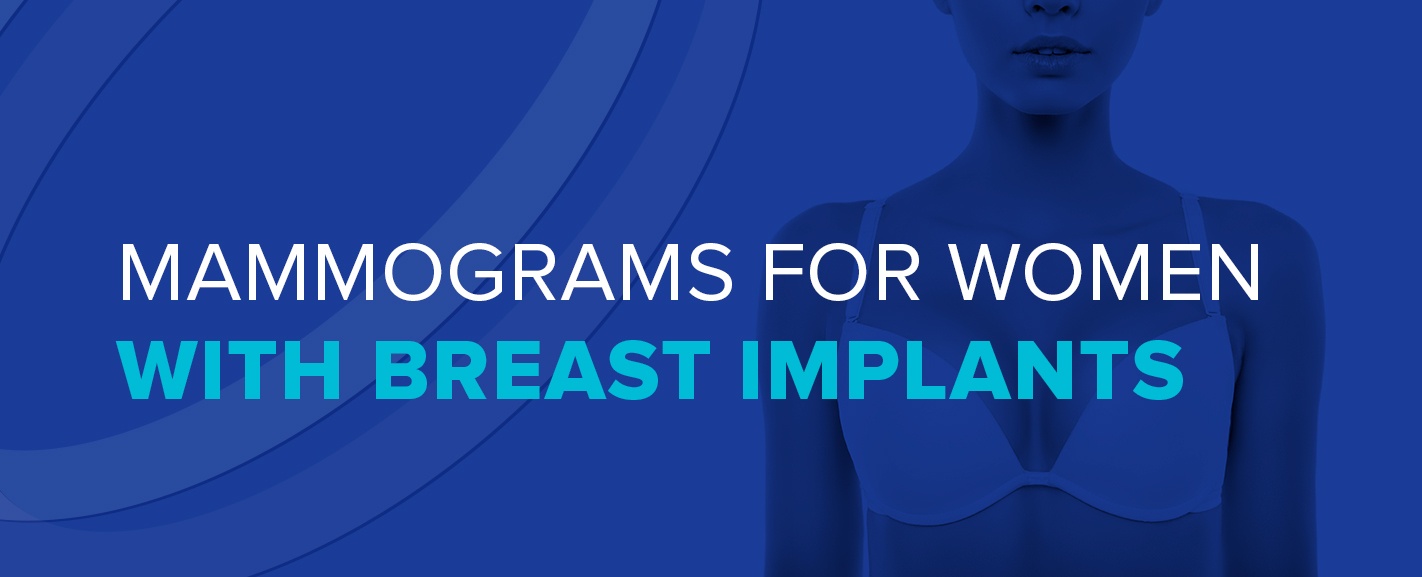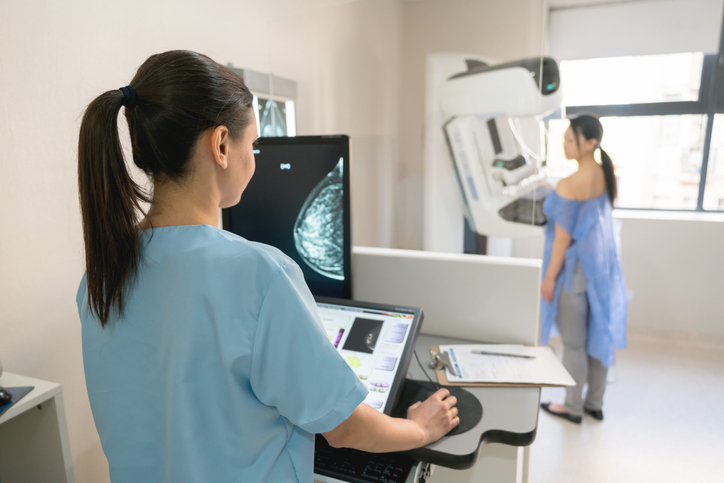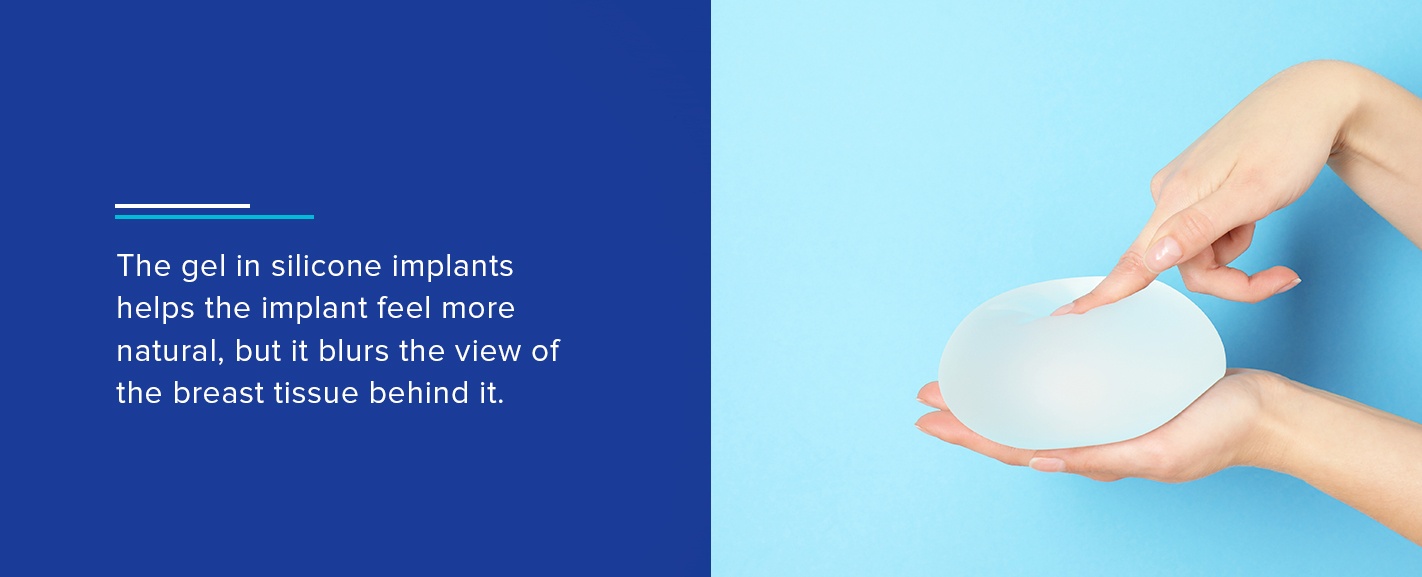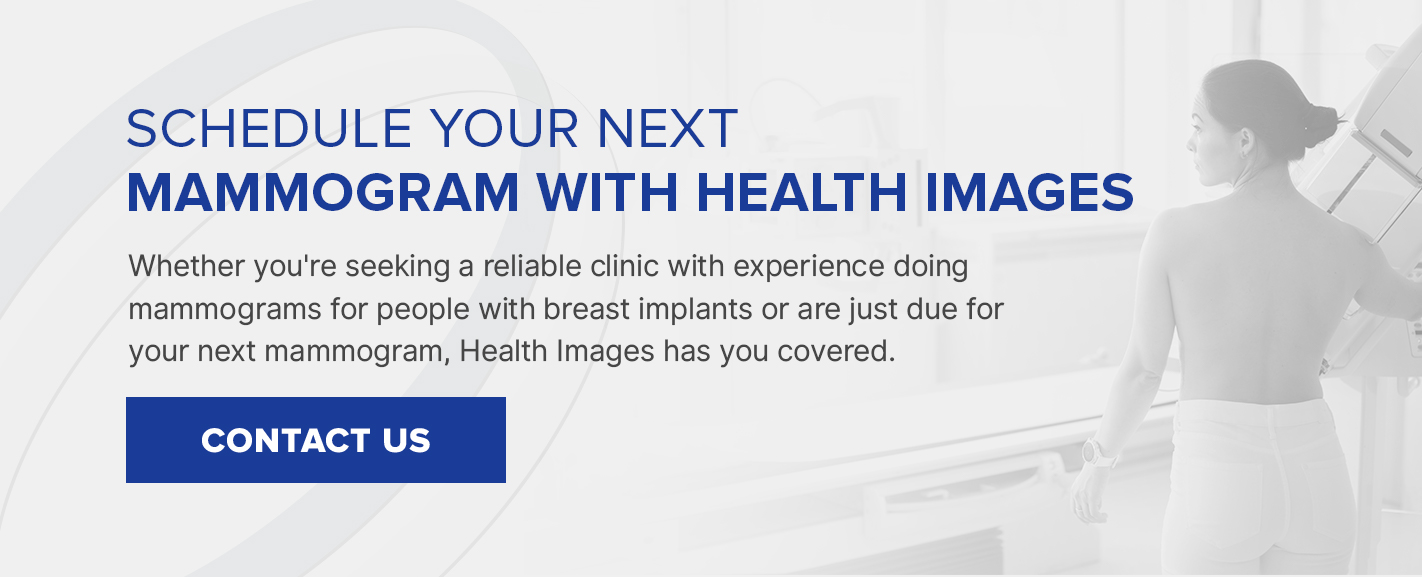Mammograms for Women With Breast Implants

Mammograms are the best early detection method for breast cancer. And contrary to what some people believe, they are essential if you have breast implants. Indeed, regular mammograms for women with implants can help identify issues such as a rupture or leakage. Getting a mammogram with breast implants isn’t much different from one without implants. However, because of the materials used to create implants, as well as their placement in the body, a mammogram with breast implants usually requires a few extra steps.
Do Breast Implants Interfere With Mammograms?
The short answer to that question is: Yes, they can. However, having a mammogram with breast implants isn’t impossible — it’s still a smart way to screen for breast cancer. What makes a mammogram a little trickier with breast implants is the material and the position of the implants.
A mammogram technologist needs to be able to see the breast tissue to spot any signs of abnormal growth or variations. However, most breast implants consist of either silicone or saline — materials that make it difficult to see the breast tissue via x-ray. The gel in silicone implants helps the implant feel more natural, but it blurs the view of the breast tissue behind it. Similarly, the sterile saltwater that fills saline implants ends up obstructing the view of the breast tissue.
Though the material is part of what makes breast screening with implants so tricky, the position of the implant also has an effect. Plastic surgeons place most breast implants either in front of or behind the pectoral muscle. Implants that are in front of the pectorals will inevitably obstruct the view of the muscle and tissue behind. However, implant placement behind the pectoral muscles makes it a little easier for the technologist to capture viable images during the mammogram.
The good news is that even if the implant is in front of the muscle, the technologist may be able to move it aside to capture the image of the tissue behind. Not all technologists can do this successfully, though.
A myth about getting mammograms with implants is that women with breast implants should stick to 2D imaging instead of 3D imaging. In reality, 3D imagery is much more detailed, which is far more useful, especially with breast implants, because it allows the technologist to capture accurate, up-close images of the breast tissue. That’s the same reason 3D mammography is an excellent screening technique for those with dense breast tissue.
Just like you should get your natural breasts checked out if you feel any unusual lumps, you should arrange to see a doctor if you suspect any irregularities, even if you have augmented breasts. It’s possible to detect breast cancer lumps as far up as the armpit, so it’s best to have any unusual growths or lumps checked out sooner, rather than later.
How Do Mammograms With Breast Implants Work?
Generally, a breast screening mammogram with implants isn’t that different than one without implants. There are four considerations:
- The technologist should know they will be examining someone with breast implants.
- The technologist should be well-versed in how to successfully examine someone with implants.
- Multiple images may be necessary.
- There is a minimal chance that an implant may rupture.
Telling your health professionals upfront that you have breast implants is crucial for several reasons. Aside from the fact that the technologist will have to shift the implant to expose the muscle behind it, they will also need to use less pressure on the breast to avoid a rupture. While making your mammogram appointment, be sure to state that you have breast implants. It also won’t hurt to remind the technologist of this fact once you’re at the facility.
But telling them is just the first step. It’s crucial to find an imaging clinic with technologists who have experience with mammograms with implants. As we mentioned, not all technologists know how to properly do breast screenings for people with implants, so ask about a clinic’s technologists and how often they screen people with implants. The provider needs to know precisely how to move the implant to allow them to see the breast tissue. They also must place less stress on the breasts during the exam.
An average mammogram consists of two photos per breast. When getting a mammogram with breast implants, however, multiple images may be necessary if the technologist is still having trouble seeing the breast tissue. The additional images, also known as implant displacement views, require the provider to push the breast implant back toward the chest and pull up the breast in front of it. The technologist then compresses the breasts, revealing a clearer image of the front part of each.
People who have very dense breast tissue often face a similar problem when the technologist cannot get a clear image. In cases like this, a doctor can order an ultrasound or an MRI to obtain the desired results. People whose implants obstruct the view of their breast tissue may expect to undergo the same screenings.
However, an ultrasound is not an adequate replacement for a mammogram because it won’t show the same things as a mammogram would. A mammogram can reveal tiny deposits of calcium that can be a way to detect the early stages of breast cancer, but an ultrasound can’t do this. However, an ultrasound may be a better way to find out if a breast implant is obscuring a mass or lump from the trained eyes of a mammogram tech.
Mammography is a very low-risk procedure, whether you have breast implants or natural breasts. The only increased risk is that of the implant rupturing or bursting. This scenario is highly unlikely, but not impossible. Revealing to the technologist that you have breast implants is one way to prevent this because they will know not to treat the implants the same way as natural breasts. It’s also a good idea to check for any existing ruptures before your mammogram.
Schedule Your Next Mammogram With Health Images
Whether you’re seeking a reliable clinic with experience doing mammograms for people with breast implants or are just due for your next mammogram, Health Images has you covered. Women should get annual mammograms after they turn 40, and a mammogram doesn’t need a referral by a general physician.
Schedule a mammogram with Health Images by getting in touch with the location closest to you and take control of your health today.
Sources:
- https://www.hzplasticsurgery.com/blog/what-are-the-different-types-of-breast-implants
- https://www.healthimages.com/what-to-expect-from-3d-mammogram/
- https://www.mayoclinic.org/tests-procedures/mammogram/expert-answers/breast-implants/faq-20057926
- https://www.cancer.org/cancer/breast-cancer/screening-tests-and-early-detection/mammograms/mammograms-for-women-with-breast-implants.html
- https://www.health.com/condition/breast-cancer/breast-implants-cancer-screening
- https://www.healthimages.com/locations/





